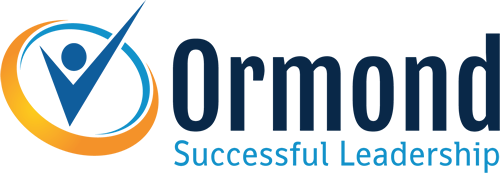Dymphna Ormond
People are an organisation’s greatest asset. All results are achieved through people. However, many managers and leaders lack the skills, knowledge, confidence, and awareness of how to do this. Leading and empowering others requires developing the right skills and mindsets and should not be overlooked; they need to be learnt, practiced, developed, supported and encouraged.
Training offers the time and safe space for managers to stretch their comfort zone and to get answers to their questions, for example:
- How do I create an environment that is motivating for each of my team members?
- How do I let go of tasks that I am used to doing and delegate them to others and who should I delegate them to?
- How should I alter my style of communication in work so that I can connect with others in my team?
- What are the different approaches to influencing; which is the best approach for different stakeholders?
- What about planning. I know it is important but how do I balance long-term planning with day-to-day planning and align with the business goals and vision?
- What about managing interpersonal relationships, conflict and building trust within the team, organisation and with all stakeholders?
- How do I manage or lead change within my team, the organisation?
Some reasons people find it difficult to change behaviours include not knowing what they don’t know, not realising the importance, thinking that they are doing it, fear of failure, feeling overwhelmed, not aware of options, not feeling safe, no-one to bounce their ideas, fears, and concerns off.
Staff need the opportunity to learn in a safe space which will enable them to reflect, explore, ask and to create their goals to support them to lead and manage themselves and their team to achieve the results that matter. They need the space to explore new mindsets, behaviours, approaches and how these will positively impact their ability to perform in their role.
The benefits of training
- Team members working in alignment with the team and organisations goals, mission and vision
- More achieved with less (less time, less conflict, fewer errors, fewer complaints)
- Team members working to their strengths and complementing, empowering and supporting each other – delivering high-quality results
- Stronger working relationships built on trust and where healthy debate is encouraged
- Better decisions
- A happy workforce that takes pride in their work
- A competitive advantage
Training provides the space and challenge so that each participant can identify their priority focus and steps to action their learning in the workplace. Managers who are not offered this opportunity may struggle to deliver key results through people consistently.
The cost of no training
People will struggle on with no training. However, at what cost? The list below captures some of the costs.
- Loss of focus, energy and commitment
- A conflict that takes a lot of energy and time to resolve
- Loss of motivation, support, direction
- Loss of confidence, trust, goodwill
- Low engagement and productivity
- Time spent trying to ‘fix’ all the above and more.
In my experience of designing and delivering training programs to managers and leaders, I have heard so many positive stories of how “the small things” that they hadn’t considered before have made such a big difference in how they lead their team and achieve results. It is the time invested in the training that has brought this to their attention, given them the space to discuss and explore it and then to practice it between modules. These are behaviours that do not require extra time to do however, save much time by doing them.
We make choices every day on how to use our time.
Learning is not compulsory, neither is survival
- Edwards Demming (1900 – 1993)
Are you willing to count the cost of not training your people?
